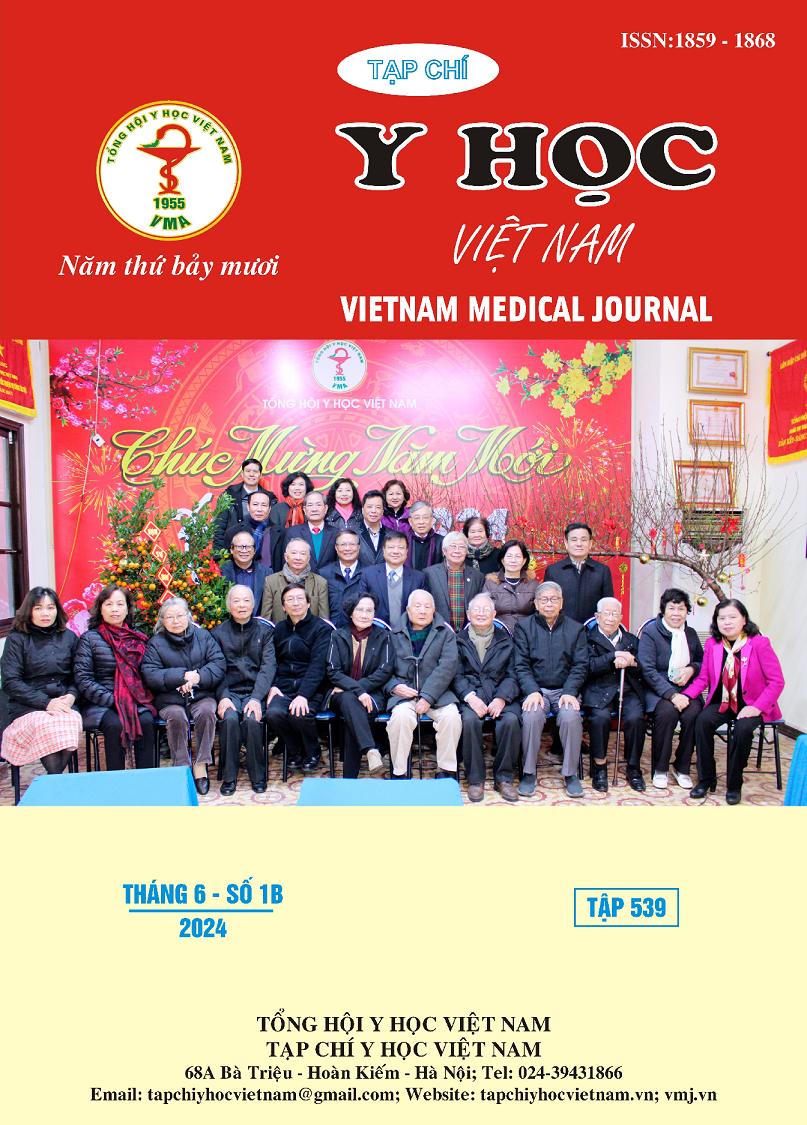CLINICAL CHARACTERISTICS, TREATMENT OUTCOMES AND RELATED FACTORS IN CHILDREN WITH HELICOBACTER PYLORI-INFECTED GASTRITIS AND DUODENITIS AT CAN THO CHILDREN'S HOSPITAL
Main Article Content
Abstract
Background: Gastric-duodenal inflammation is a common condition across all age groups, often recurrent and potentially leading to complications such as ulcers or cancer. Children, due to their immature physiology and immune system, may present with different clinical manifestations and treatment responses compared to adults, necessitating a more specific and cautious approach. Objectives: To describe the clinical and paraclinical characteristics and evaluate treatment outcomes, as well as explore related factors in children aged 5-16 years with Helicobacter pylori (H. pylori) infection-related gastritis and duodenitis. Materials and methods: A cross-sectional descriptive study was conducted on children aged 5-16 years diagnosed and treated for H. pylori-infected gastritis and duodenitis at Can Tho Children's Hospital from June 2023 to December 2023. Results: A total of 45 patients were included in the study. The male-to-female ratio was approximately 1/1.4, a mean age of 10.71 ± 2.82 years. Common symptoms included abdominal pain (93.3%), predominantly epigastric pain (83.3%), followed by vomiting (24.4%). Endoscopic results revealed predominantly nodular gastritis (71.1%) mainly located in the antrum (91.1%). A quadruple therapy with Bismuth was chosen for most cases (93.3%). The treatment success rate was 75.6%. The ≤ 10 years age group had a higher treatment failure rate (72.7%) compared to older children (> 10 years) (27.3%) with p = 0.046. Conclusion: H. pylori-infected gastritis and duodenitis in children mostly presents with abdominal pain. Lesions observed through upper gastrointestinal endoscopy are mostly nodular gastritis, with the antrum being the most commonly affected site. The majority of cases were successfully treated, although the ≤ 10 years age group was associated with a higher risk of treatment failure.
Article Details
Keywords
Gastritis and duodenitis, Helicobacter pylori, upper gastrointestinal endoscopy, treatment outcomes.
References
2. Lê Thị Thuý Loan, Nguyễn Thanh Liêm. Đặc điểm tổn thương qua nội soi và tỷ lệ nhiễm Helicobacter pylori ở trẻ viêm dạ dày, loét dạ dày - tá tràng tại bệnh viện Trường Đại học Y Dược Cần Thơ. Tạp chí Y dược Cần Thơ. 2018; 15:135-170.
3. Nguyễn Thị Út, Hoàng Thị Bích Ngọc, Nguyễn Hồng Phúc. Kháng kháng sinh tiên phát của helicobacter pylori ở trẻ em loét dạ dày - tá tràng tại bệnh viện Nhi Trung Ương năm 2023. Tạp chí Y học Việt Nam. 2023; 533(1B):183-188.
4. Alimohammadi H., Fouladi N., Salehzadeh F., Alipour S.A., Javadi M.S.. Childhood recurrent abdominal pain and Helicobacter pylori infection, Islamic Republic of Iran. East Mediterr Health J. 2017; 22(12):860-864.
5. Hong J., Yang H.R. Efficacy of Proton Pump Inhibitor-based Triple Therapy and Bismuth-based Quadruple Therapy for Helicobacter pylori Eradication in Korean Children. Pediatr Gastroenterol Hepatol Nutr. 2012; 15(4):237-242.
6. Jones N.L., Koletzko S., Goodman K., et al. Joint ESPGHAN/NASPGHAN Guidelines for the Management of Helicobacter pylori in Children and Adolescents (Update 2016). J Pediatr Gastroenterol Nutr. 2017; 64(6):991-1003
7. Le L.T.T., Nguyen T.A., Nguyen N.A., Nguyen Y.T.H., Nguyen H.T.B., et al. Helicobacter pylori Eradication Efficacy of Therapy Based on the Antimicrobial Susceptibility in Children with Gastritis and Peptic Ulcer in Mekong Delta, Vietnam. Children (Basel). 2022; 9(7):1019.
8. Van Thieu H., Duc N.M., Nghi B.T.D., Van Bach N., Khoi H.H., et al. Antimicrobial Resistance and the Successful Eradication of Helicobacter pylori-Induced Gastroduodenal Ulcers in Vietnamese Children. Med Arch. 2021 Apr;75(2):112-115.


